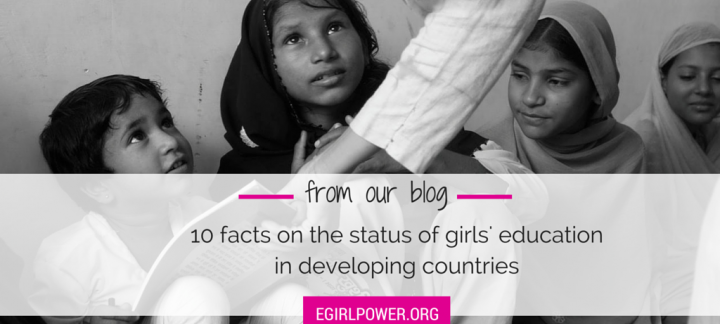10 facts on the status of girls education in developing countries today
-
Education of women in developing countries directly contributes to the growth of national income by improving the productive capacities of the labor force.
A recent study of 19 developing countries found that national long-term economic growth increases by 3.7 percent for every year adult population of average level schooling rises.
-
As female education rises, fertility, population growth, and infant and child mortality fall, while family health improves.
Women who are educated are shown to take better care of their children in an intelligent and effective manner, reducing child mortality rates by 5 to 10 percent.
-
Educated women are more productive at work – and better paid.
Societally and economically, the dividend for education investment is often high, increasing a woman’s future earnings by about 15 percent.
-
Women make up two-thirds of illiterate adults around the world, a figure that has remained largely unchanged for over two decades.
Literacy still poses a huge dilemma for women across the world. In developing countries, while some women may experience nominal education in primary school, most do not reach full literacy or are enrolled in secondary education.
-
Families in the Middle East and North African region often make greater investments in education for boys than for girls.
In many countries in the region, women must obtain permission from a male relative, usually husband or father, before seeking employment or even traveling. Gender discrimination, thus codified by law, renders female education very difficult in that region.
-
Globally, 10 million more girls are out of school than boys.
41 million girls across the world are still denied primary education and women account for nearly two-thirds of the world’s 780 million people who do not read.
-
Enrollment in early education in developing countries is low.
In the least developed countries, enrollment rates are only 47 percent at the primary level and 12 percent at the secondary level.
-
Education in developing countries shows link to health in family units.
Women with more education of at least secondary school in developing countries are statistically shown to raise healthier, more socially adaptive children.
-
Education in developing countries such as India has been linked to the trend of gender parity.
Women who are educated in developing countries, like India, tend to make larger sociological and political imprints in their respective societies, helping implement policies that allow for equality of opportunity in more national areas.
-
Violence still prevails on women in different sectors and often influences them not to seek an education.
Murdering of women for dowry, abduction, and smuggling of women and small girls, rape, and sexual harassment still occur. Incidence of injustice occurring in rural courts, enhanced by misinterpretation of religious concepts, are not uncommon still today. This deters educational efforts.
Help eGirl Power fight gender inequality and change the future of hundreds of girls in need through education. Donate now.


